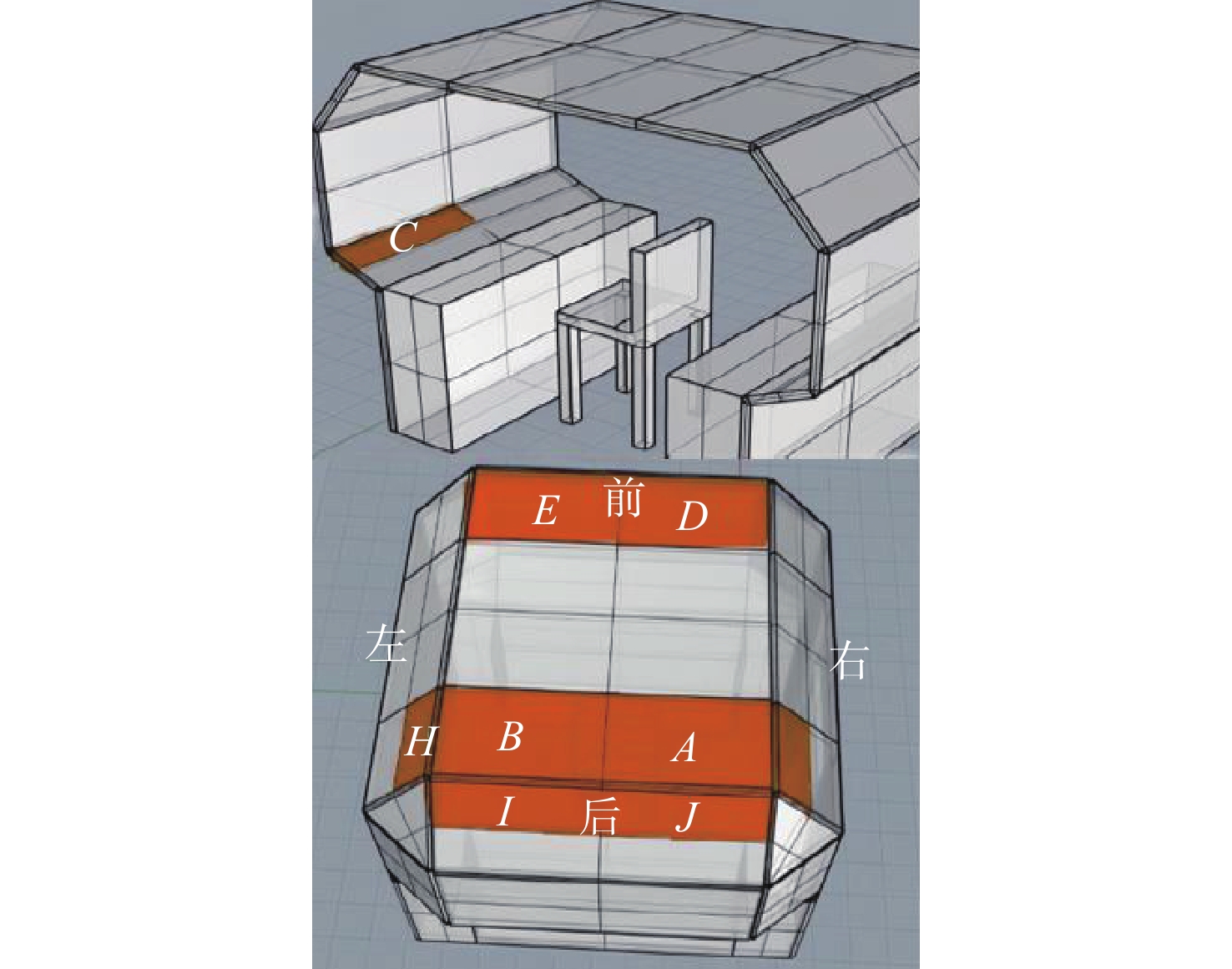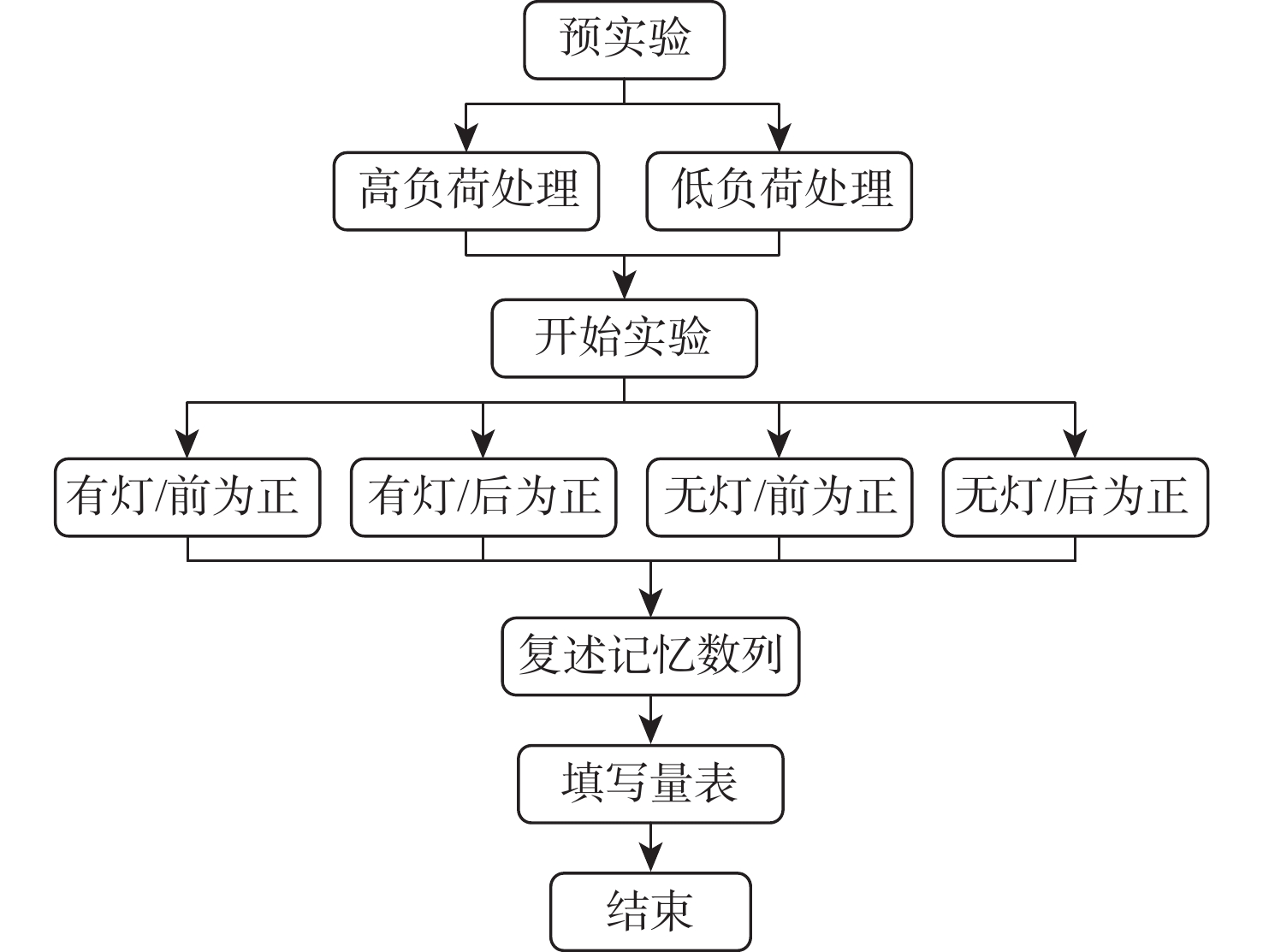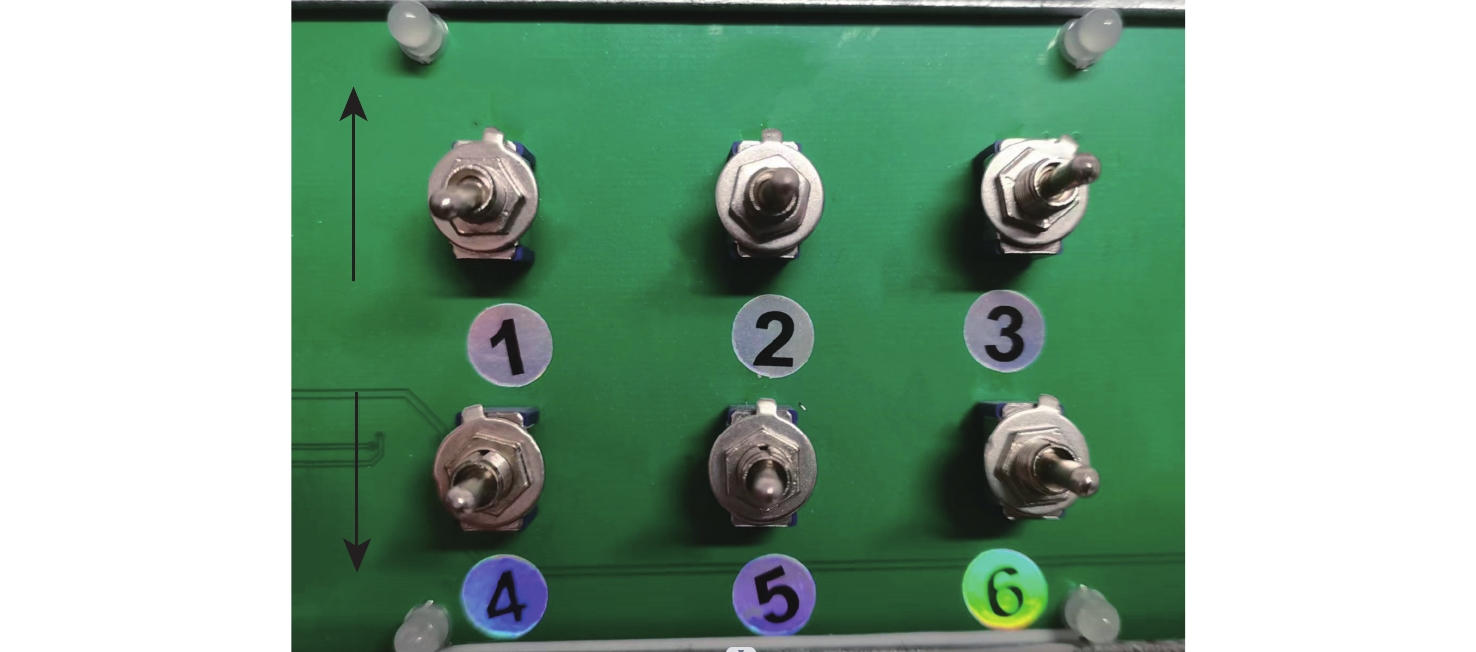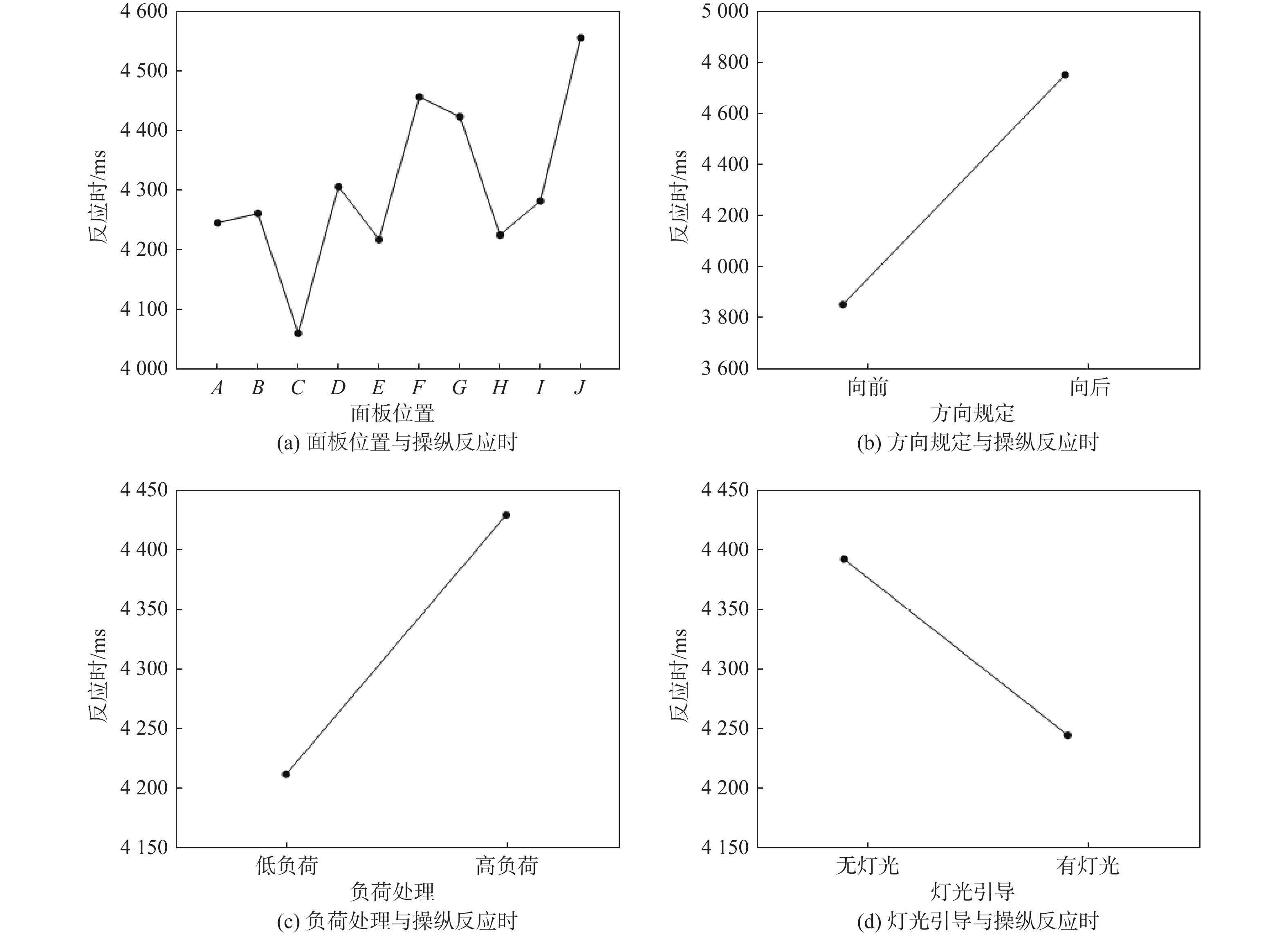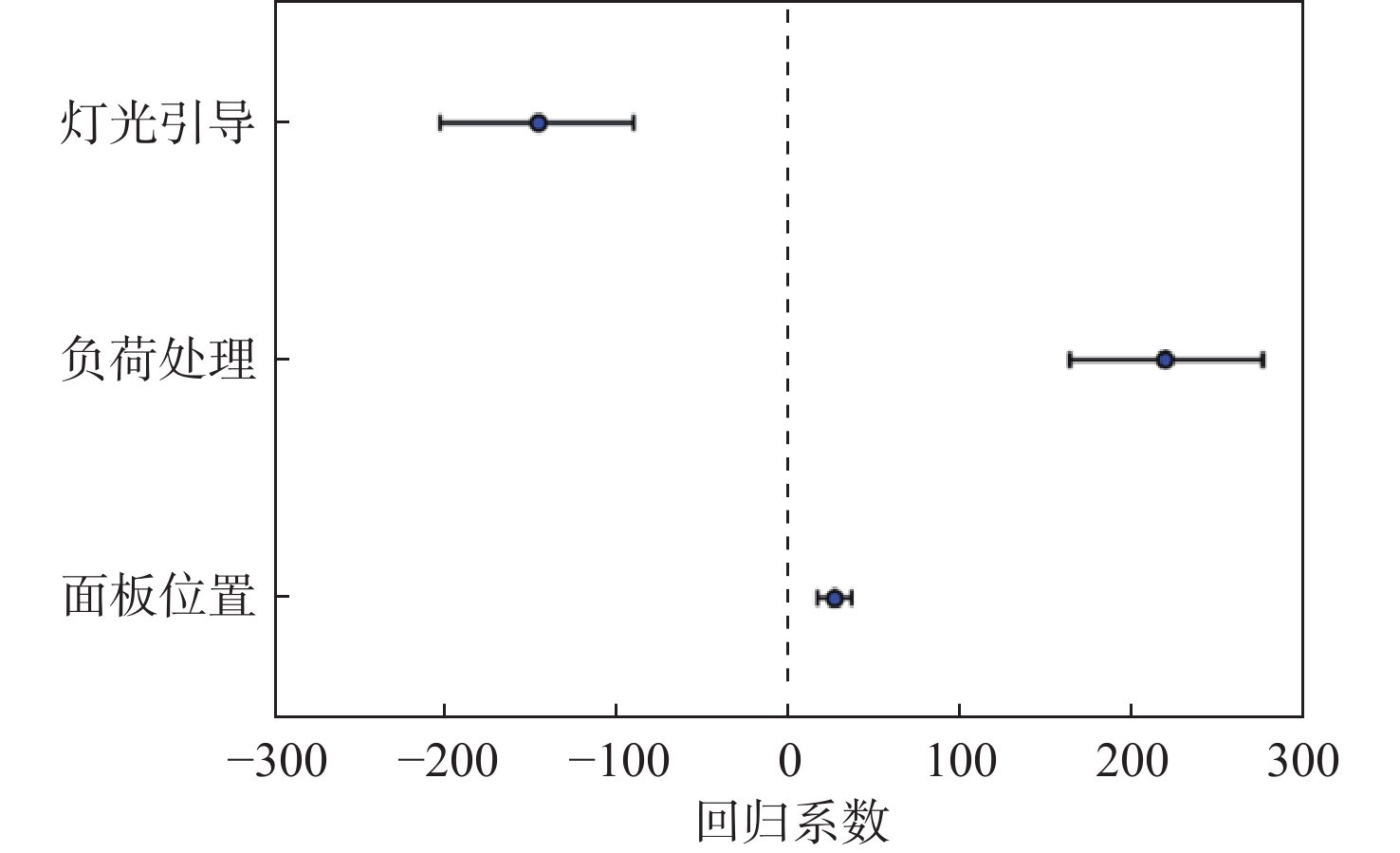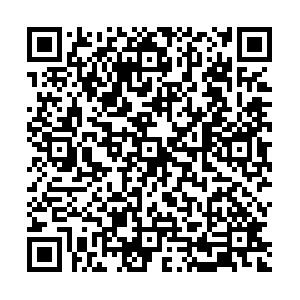Research on response time of cockpit toggle switch under influence of multiple factors
-
摘要:
针对飞行员操纵驾驶舱拨动开关的反应时问题,通过搭建飞行模拟实验舱,采集飞行员操纵驾驶舱拨动开关的反应时数据,应用多因素方差分析方法,研究在多因素影响下,影响飞行员反应时的因素。结果表明:驾驶舱拨动开关位于飞行员正前方左侧水平斜向下45°的面板,反应时最短;规定正确的操作开关方向为向前为正,相比方向为向后为正,飞行员的操纵反应时更短;高负荷因素下,飞行员反应时更长;有灯光引导条件下可以降低飞行员的反应时;面板位置、负荷处理、灯光引导3种因素主体之间的交互作用对飞行员操纵驾驶舱拨动开关的反应时的影响显著。通过实验研究与数据处理分析,结果客观真实,有助于提升飞行员的飞行安全水平,也为操纵器件设计问题提供了基础实验研究和建议。
Abstract:With the goal of observing how a pilot’s response changes when he or she manipulates the toggle switch in the cockpit, an experimental flight simulation cabin will be built, response time data will be gathered from the pilots when they manipulate the toggle switch, and the multi-factor variance analysis method will be used to examine the impact of various factors on the pilots’ responses. The findings indicate that: the pilot’s response time is the shortest when the correct operation switch direction is forward as positive, as opposed to backward as positive. The cockpit toggle switch is situated on the left panel in front of the pilot, with a 45° downward horizontal slope. The pilot’s response time is influenced by the interaction of three main factors: panel position, load processing, and light guidance. The pilot’s response time is shorter when the control is applied, longer when there are high load factors, and reduced when there is light guidance. The objective and true results are beneficial in raising the pilot’s degree of flight safety through experimental research and data processing analysis. They also offer fundamental experimental research and recommendations for control device design.
-
Key words:
- ergonomics /
- cockpit /
- toggle switch /
- response time /
- influencing factors
-
表 1 误差方差等同性的 Levene 检验(反应时)
Table 1. Levene’s test for equivalence of error variances (response time)
莱文统计 自由度1 自由度2 显著性 0.968 79 2320 0.561 表 2 主体间效应检验
Table 2. Tests for between-subject effects
因素 自由度 均方 F 显著性 方向规定 1 485385494.370 292.366 0 面板位置 9 4817054.291 2.901 0.002 负荷处理 1 28976015.284 17.453 0 灯光引导 1 12937338.200 7.793 0.005 方向规定*面板位置 9 1674193.558 1.008 0.431 方向规定*负荷处理 1 14061469.594 8.470 0.004 方向规定*灯光引导 1 6246582.700 3.763 0.053 面板位置*负荷处理 9 2668982.312 1.608 0.107 面板位置*灯光引导 9 2862027.499 1.724 0.078 负荷处理*灯光引导 1 1782531.520 1.074 0.300 方向规定*面板位置*负荷处理 9 2608924.222 1.571 0.118 方向规定*面板位置*灯光引导 9 1639110.614 0.987 0.448 方向规定*负荷处理*灯光引导 1 614560.010 0.370 0.543 面板位置*负荷处理*灯光引导 9 3590089.864 2.162 0.022 方向规定*面板位置*负荷处理*灯光引导 9 3007857.765 1.812 0.061 注:“*”表示因素交互作用。 表 3 面板位置方差分析
Table 3. Analysis of variance of panel position
面板位置 反应时/ms A(n=240) 4245.52 ±841.53B(n=240) 4261.29 ±834.07C(n=240) 4059.82 ±849.86D(n=240) 4306.25 ±834.09E(n=240) 4217.51 ±825.67F(n=240) 4457.07 ±2607.46 G(n=240) 4423.70 ±2572.93 H(n=240) 4225.10 ±821.31I(n=240) 4282.40 ±859.70J(n=240) 4556.66 ±872.23注: F值为2.522,显著性值为0.007。反应时数据为平均值±标准值。 表 4 线性回归分析结果
Table 4. Linear regression analysis results
变量 非标准化系数 t p VIF F 常数 4048.612 30.226 0 F(3, 2396 )=9.787,
显著性值为0面板位置 26.463 2.702 0.007 1 负荷处理 219.758 3.905 0 1 灯光引导 −146.841 −2.610 0.009 1 注:D-W值为1.679。 -
[1] DEMAGALSKI J, HARRIS D, SALMON P, et al. Design induced errors on the modern flight deck during approach and landing[C]// HCI-Aero 2002 Proceedings. Palo Alto: AAAI, 2002: 173-178. [2] DON H. Rule fragmentation in the airworthiness regulations: A human factors perspective[C]//Proceedings of the International Conference on Engineering Psychology and Cognitive Ergonomics. Berlin: Springer, 2011: 546-555. [3] 阎奕帆, 甘旭升, 吴亚荣, 等. 基于改进FRAM方法的飞机着陆安全品质分析[J]. 北京航空航天大学学报, 2023, 49(8): 1964-1973.YAN Y F, GAN X S, WU Y R, et al. Aircraft landing safety quality analysis based on modified FRAM method[J]. Journal of Beijing University of Aeronautics and Astronautics, 2023, 49(8): 1964-1973(in Chinese). [4] 王丽荣, 庄达民, 王睿, 等. 飞机拨动开关布置的人机工效分析[J]. 中国民航飞行学院学报, 2004, 15(2): 3-6.WANG L R, ZHUANG D M, WANG R, et al. Ergonomic analysis of toggle switch arrangement in aircraft[J]. Journal of Civil Aviation Flight University of China, 2004, 15(2): 3-6(in Chinese). [5] 袁守利, 郭铮. 考虑驾驶员反应时间的车辆碰撞预警模型[J]. 安全与环境学报, 2021, 21(1): 270-276.YUAN S L, GUO Z. A warning model for vehicle collision on account of the reaction time of the driver[J]. Journal of Safety and Environment, 2021, 21(1): 270-276(in Chinese). [6] 唐阳山, 夏道华. 不同驾驶员反应时间对汽车防撞安全距离的影响研究[J]. 科学技术与工程, 2016, 16(1): 250-254.TANG Y S, XIA D H. Study the influence of different driver’s reaction time to the automobile anti-collision safety distance[J]. Science Technology and Engineering, 2016, 16(1): 250-254(in Chinese). [7] 潘雨帆. 驾驶员简单反应时间预测方法研究[D]. 成都: 西南交通大学, 2018: 19-24.PAN Y F. Study on the prediction method of driver’s simple reaction time[D]. Chengdu: Southwest Jiaotong University, 2018: 19-24 (in Chinese). [8] DURIĆ P, FILIPOVIĆ D. Reaction time of drivers who caused road traffic accidents[J]. Medicinski Pregled, 2009, 62(3-4): 114-119. doi: 10.2298/MPNS0904114D [9] SCIALFA C T, BORKENHAGEN D, LYON J, et al. A comparison of static and dynamic hazard perception tests[J]. Accident Analysis & Prevention, 2013, 51: 268-273. doi: 10.1016/j.aap.2012.12.006 [10] 马小翔, 陈丰, 张霖. 预期接管场景下接管绩效及接管风险研究[J]. 中国公路学报, 2022, 35(1): 159-168.MA X X, CHEN F, ZHANG L. Takeover-performance and takeover-risk evaluation under non-critical transition scenarios[J]. China Journal of Highway and Transport, 2022, 35(1): 159-168(in Chinese). [11] 耿岚鑫, 刘凇男, 刘大学. 驾驶员反应时间研究[J]. 交通节能与环保, 2015, 11(2): 25-29.GENG L X, LIU S N, LIU D X. Research on reaction time of driver[J]. Energy Conservation & Environmental Protection in Transportation, 2015, 11(2): 25-29(in Chinese). [12] 张开冉, 李国芳. 新驾驶员反应特性分析[J]. 中国安全科学学报, 2008, 18(8): 115-118.ZHANG K R, LI G F. Analysis on the driving reaction ability of novice drivers[J]. China Safety Science Journal, 2008, 18(8): 115-118(in Chinese). [13] KHASHBAT J, TSEVEGJAV T, MYAGMARJAV J, et al. Determining the driver’s reaction time in the stationary and real-life environments (comparative study)[C]//Proceedings of the 7th International Forum on Strategic Technology. Piscataway: IEEE Press, 2012: 1-3. [14] SAMANI A R, MISHRA S, DEY K. Assessing the effect of long-automated driving operation, repeated take-over requests, and driver’s characteristics on commercial motor vehicle drivers’ driving behavior and reaction time in highly automated vehicles[J]. Transportation Research Part F: Traffic Psychology and Behaviour, 2022, 84: 239-261. doi: 10.1016/j.trf.2021.10.015 [15] GUO M Z, LI S W, WANG L H, et al. Research on the relationship between reaction ability and mental state for online assessment of driving fatigue[J]. International Journal of Environmental Research and Public Health, 2016, 13(12): 1174. doi: 10.3390/ijerph13121174 [16] NAEERI S, KANG Z, MANDAL S, et al. Multimodal analysis of eye movements and fatigue in a simulated glass cockpit environment[J]. Aerospace, 2021, 8(10): 283. doi: 10.3390/aerospace8100283 [17] FABRE E F, JAHANPOUR E S, CAUSSE M. Human mirror neuron system based alarms in the cockpit: A neuroergonomic evaluation[J]. Applied Psychophysiology and Biofeedback, 2021, 46(1): 29-42. doi: 10.1007/s10484-020-09481-0 [18] 何静远. 驾驶舱飞行员手眼配合模式与认知过程相关性研究[D]. 上海: 上海交通大学, 2013: 91-94.HE J Y. Research on correlation between eye-hand coordination pattern and cognitive process of pilot in flight deck[D]. Shanghai: Shanghai Jiao Tong University, 2013: 91-94(in Chinese). [19] 林燕丹, 艾剑良, 杨彪, 等. 民机驾驶舱在恶劣光环境下的飞行员视觉工效研究[J]. 科技资讯, 2016, 14(13): 175-176.LIN Y D, AI J L, YANG B, et al. Visual ergonomics research of civil aircraft cockpit in harsh iuminous conditions[J]. Science & Technology Information, 2016, 14(13): 175-176(in Chinese). [20] 凡明坤. 飞机驾驶舱显示界面对飞行员工作负荷的影响研究[D]. 南京: 南京航空航天大学, 2018: 9-21.FAN M K. Research on the effect of aircraft cockpit display interface on pilots’ workload[D]. Nanjing: Nanjing University of Aeronautics and Astronautics, 2018: 9-21(in Chinese). [21] 潘玲玲, 孙有朝, 刘星, 等. 飞机座舱低光照度对飞行员视觉工效的影响[J]. 人类工效学, 2017, 23(1): 1-4.PAN L L, SUN Y C, LIU X, et al. Effect of aircraft cabin low illumination on visual ergonomics of pilots[J]. Chinese Journal of Ergonomics, 2017, 23(1): 1-4(in Chinese). [22] 戴苏榕, 朱建坤, 李威. 基于听觉感知的驾驶舱信息提示设计研究[J]. 航空电子技术, 2021, 52(4): 9-13.DAI S R, ZHU J K, LI W. Design of cockpit information notification based on auditory perception[J]. Avionics Technology, 2021, 52(4): 9-13(in Chinese). [23] MARSH J R. The impact of changing the size of aircraft radar displays on visual search in the cockpit[D]. Kaduna: Air Force Institute of Technology, 2020. [24] 陈农田. 航空中人的因素理论研究综述[J]. 人类工效学, 2014, 20(4): 89-92.CHEN N T. A summary of the theoretical research on human factors in aviation[J]. Chinese Journal of Ergonomics, 2014, 20(4): 89-92(in Chinese). [25] 陆崑, 卫宗敏, 庄达民, 等. 飞机驾驶舱显示界面脑力负荷判别预测生理模型[J]. 北京航空航天大学学报, 2016, 42(4): 685-693.LU K, WEI Z M, ZHUANG D M, et al. Integrated physiological model for mental workload assessment and prediction of aircraft flight deck display interface[J]. Journal of Beijing University of Aeronautics and Astronautics, 2016, 42(4): 685-693(in Chinese). [26] 中华人民共和国国家质量监督检验检疫总局, 中国国家标准化管理委员会. 机械电气安全 指示、标志和操作 第3部分: 操作器的位置和操作的要求: GB/T 18209.3—2010[S]. 北京: 中国标准出版社, 2011.General Administration of Quality Supervision, Inspection and Quarantine of the People’s Republic of China, Standardization Administration of the People’s Republic of China. Electrical safety of machinery—Indication, marking and actuation—Part 3: Requirements for the location and operation of actuators: GB/T 18209.3—2010[S]. Beijing: Standards Press of China, 2011(in Chinese). -







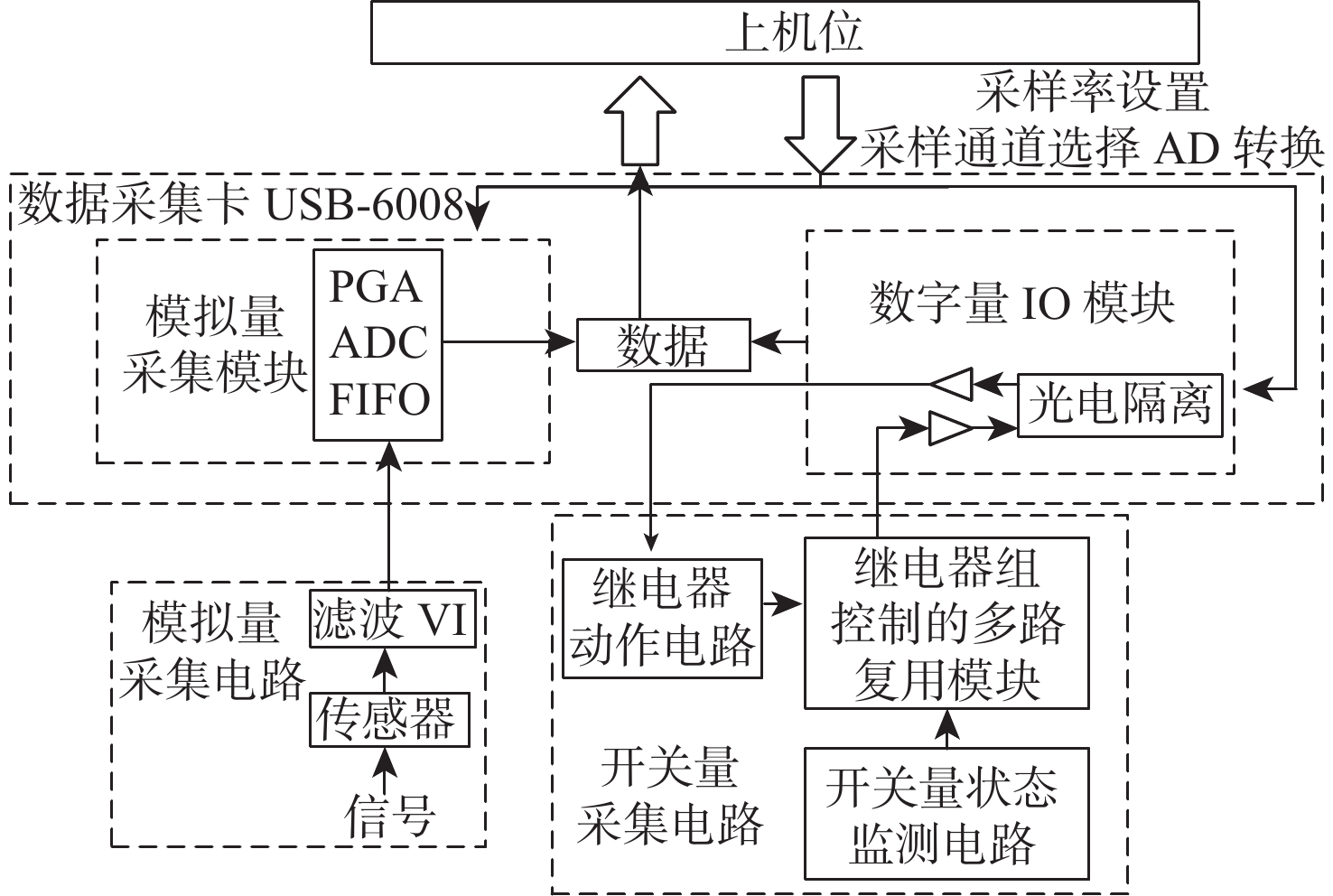
 下载:
下载:
